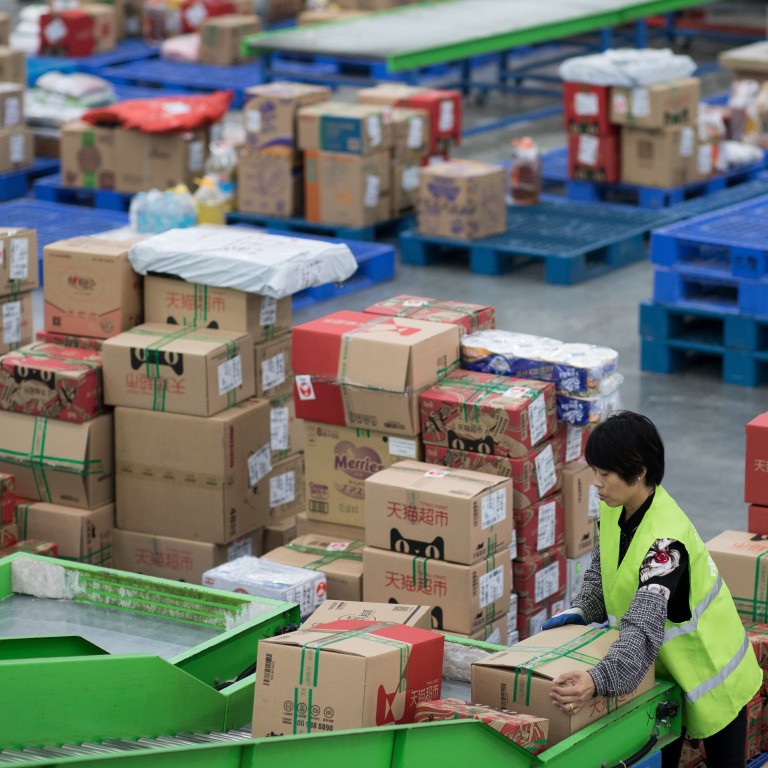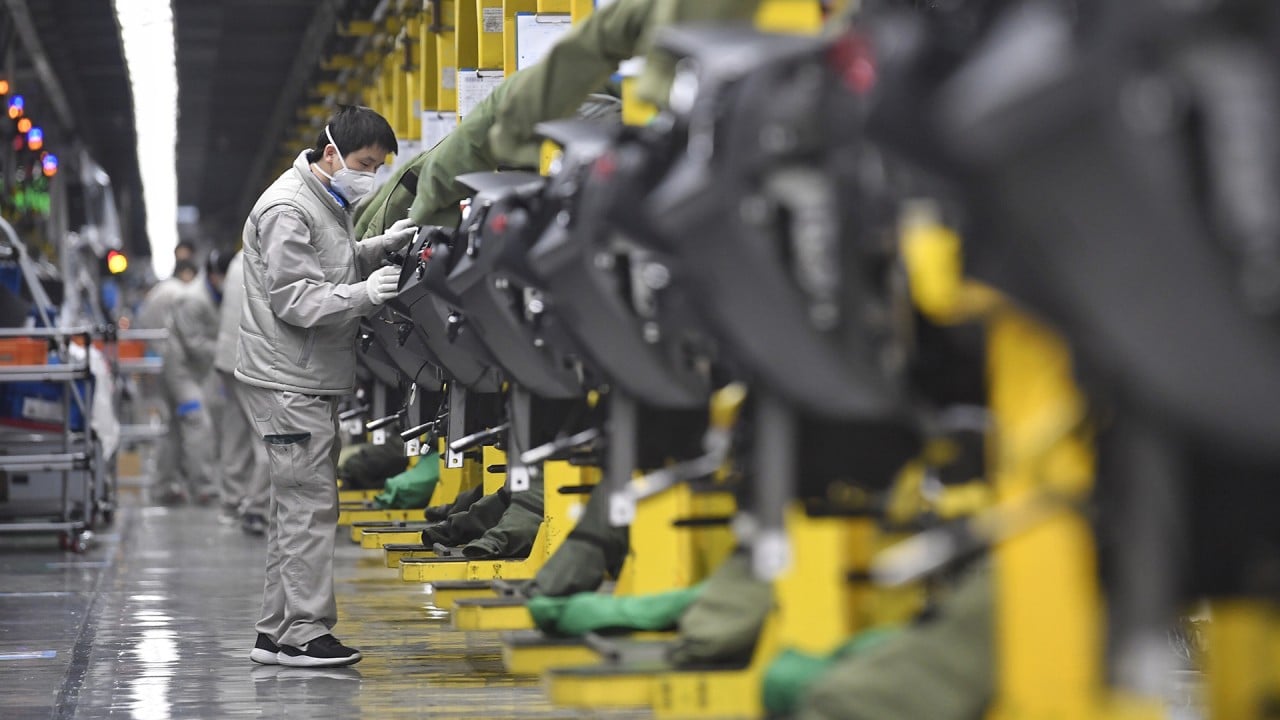
China’s economic recovery continued in January at slower pace as coronavirus outbreak takes toll
- China’s official manufacturing purchasing managers’ index (PMI) fell to 51.3 in January from 51.9 in December
- The official non-manufacturing PMI, which measures sentiment in the service and construction sectors, fell to 52.4 from 55.7
China’s economy recovery continued in January but at a slower pace, as the resurgence of coronavirus in parts of the country took a toll on business sentiment, led by a sharp drop in service sector morale.
December’s reading was below the median prediction of a poll of analysts conducted by Bloomberg, which expected a drop to 51.5.
China’s non-manufacturing PMI – a gauge of sentiment in the services and construction sectors – fell to 52.4 in January, down from December’s reading of 55.7 and well below analysts forecasts of 55.
Within the non-manufacturing PMI, the sub-index for the construction sector fell to 60 in January from 60.7 in December, while the service sector business activities index fell to 51.1 from 54.8.
A reading above 50 indicates growth in sector activity, while a reading below represents contraction. The higher the reading above 50, the faster the pace of expansion.
The official composite PMI – a combination of the manufacturing and non-manufacturing indices – fell to 52.8 in January from 55.1 in December.
The recent resurgence in the coronavirus epidemic “has had a certain impact on the production and operation of some enterprises” in the industrial sector, NBS senior statistician Zhao Qinghe said in a statement accompanying the data. He said also that the approaching Lunar New Year holiday was the traditional off season for the sector, which would have an impact on output.
“Growth momentum in the service industry declined. ,” he said. “Affected by the local epidemic clusters, the business activity index of the service industry was 3.7 points lower than last month, at 51.1. Although the service industry still maintained a recovery trend, the sentiment level has dropped.”
Within the service sector, the accommodation, catering, culture, sports and entertainment, and resident services subsector showed contractions in activity, Zhao said.
“In addition, logistics has slowed in some areas recently, coupled with the reduction in business and personal travel, the business activity index for road transport, air transport and other industries has dropped below the critical point, with industry activity contracting.”
The slowdown in construction activity was due in part to low winter temperatures and the approach of the Spring Festival holiday, Zhao said.

01:33
China’s economy accelerated at end of 2020, but virus-hit annual growth lowest in 45 years
The economic rebound last year was highlighted by a significant acceleration over the last three months of 2020, when China’s economy grew by 6.5 per cent from a year earlier, ahead of analysts’ forecasts of 6.2 per cent growth and in line with the growth rate at the end of 2019, before the original coronavirus outbreak.
Profits rose 20.1 per cent year on year in the month to 707.11 billion yuan (US$109.3 billion), after rising 15.5 per cent in November.

